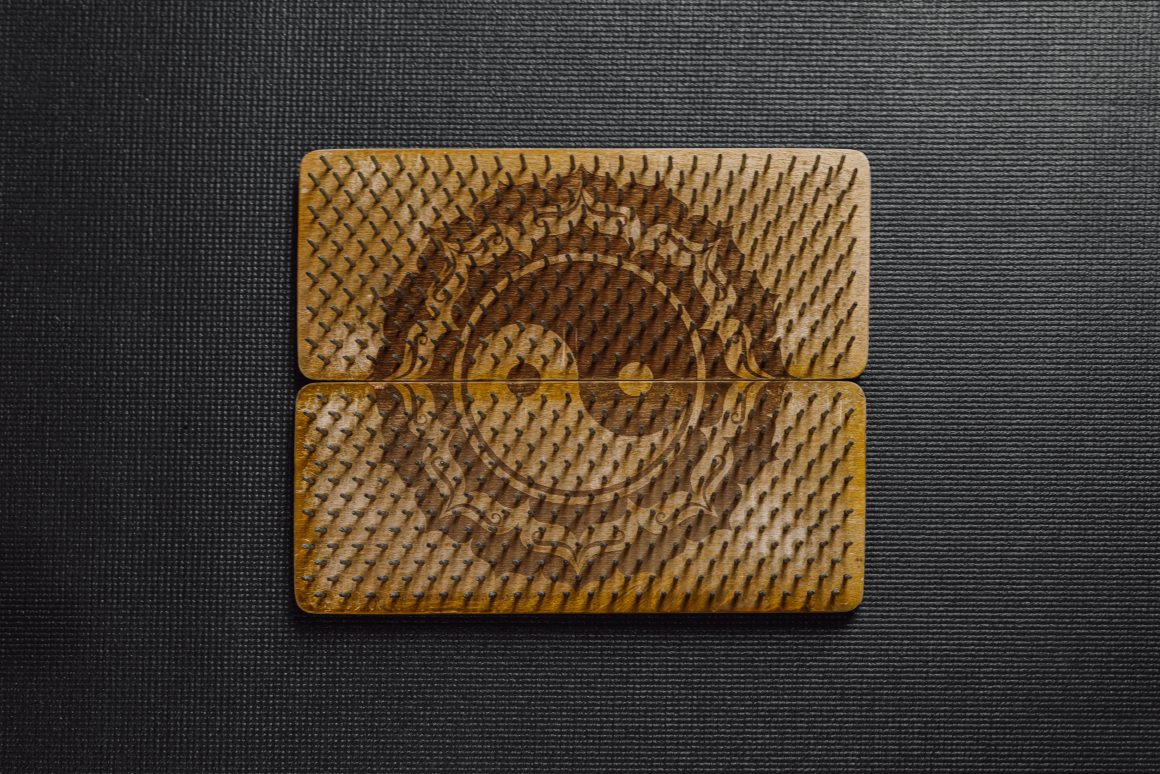The origin of yin and yang goes back to ancient Chinese philosophy. The yin and yang symbols are two halves that together complete wholeness. Over the centuries, the meaning of yin and yang has influenced every aspect of Chinese cosmology, astrology, fortune-telling, medicine, art, and even government.
The principle of yin and yang is found in the Chinese “Book of Changes” (Yijing). The basic religious or philosophical context is Daoism, and the underlying idea is very simple: all things have a necessary polar opposite.
According to the yin-yang philosophy, the two opposing forces always alternate: a high phase is followed by a low phase, movement is followed by rest, and so on. You have probably already experienced this in your day-to-day life – some days you are energized, and others you have no energy at all.
Yin and Yang Colors and Symbol
Today we usually associate the yin yang with that small, round, black-and-white symbol. However, this beautiful symbol (taijitu in Chinese) does not represent yin and yang as a whole but only embodies the individual balance of forces.
The symbol that immediately comes to mind when thinking of yin-yang is made up of a white part and a black part. The black area (yin) represents darkness, calm, passive reception, feminine and soft. White (yang), on the other hand, symbolizes the sun or luminosity and heat, active delivery, and masculinity.
Man and Woman, Tiger and Dragon: Additional Meaning
The philosophy about the contrasting elements that yin and yang represent often applies to gender as well. In this case, we are talking about the contrast between the woman (yin) and the man (yang), but sometimes also about the unity between the tiger (yin) and the dragon (yang). But what does this mean in concrete terms?
Both the division into feminine yin and masculine yang and the distinction between the active dragon and the more passive tiger is based on exactly the same principle: one cannot exist without the other. The tiger and the dragon originate from the Chinese zodiac signs. Basically, there are no significant differences in these presentations of the yin-yang concept.
Yin and Yang in the Body
The relationship between two forces is also applied practically in traditional Chinese medicine. Here, the organs are divided into active and passive functions. Yin, for example, corresponds to the heart, liver, and lungs, while yang is found in the stomach, intestines, and bladder. Consequently, in yin and yang the activity of individual organs is coordinated in the best possible way.
Yin and yang are much more than a small symbolic signs and can actually be found every day around us; after all, contrasts occur everywhere.
How to Balance Yin and Yang
Unfortunately, yin and yang can sometimes be out of balance, causing a series of effects on a physical, emotional, and spiritual level. For example, confrontations in the family, inability to face emotions, or even difficulties in finding a purpose in life. In order to master the art of balancing the energies of Yin and Yang, it is required to unlock our internal force, and these are three alternatives to achieve it:
– Through the body.
In order to balance the two energies of Yin and Yang throughout the body, it is important to train in the simultaneous use of both hemispheres, starting from using both hands in daily life. Balancing yin and yang means being in constant communication with yourself without having to analyze or judge the most immediate response of your body. Even if that includes spending time resting or forcing the body to exercise, another method of balancing throughout the body is to adopt the beliefs of Traditional Chinese Medicine and transform the diet. If you are more inclined towards yin, it is better to consume more Yang foods like eggs, root vegetables, and grains.
– Through the mind.
Daily meditation is the best way to balance yin and yang, improving the manifestation of our own image and identity. The practice begins with the body, sitting cross-legged with the palms of the hands resting on the knees. During this practice, it is recommended to visualize the two hemispheres working in balance or using the breath in four points to balance both hemispheres of the body. It is likely that you can find emotions or thoughts that cause us suffering, so it is best to become observers of them without allowing them to affect us in the present. That is to say that while we look for ourselves outside of our fears, be able to speak with our true self-care needs, and one way to do that is by aligning our chakras.
– Through the spirit.
Integrating non-duality is a practice that requires an act of faith (non-religious) that helps realign our perception. This means not only understanding that our perceptions of polarity are limits that can cause suffering but also the ability to see beyond our limitations to empathically see the limitations of others. This type of work involves a process of understanding death that has no end, that fades between light and dark, life and death, male and female. In this way, Yin and Yang can move through us in balance, continuity, and without duality.







